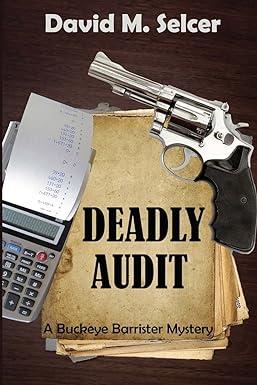
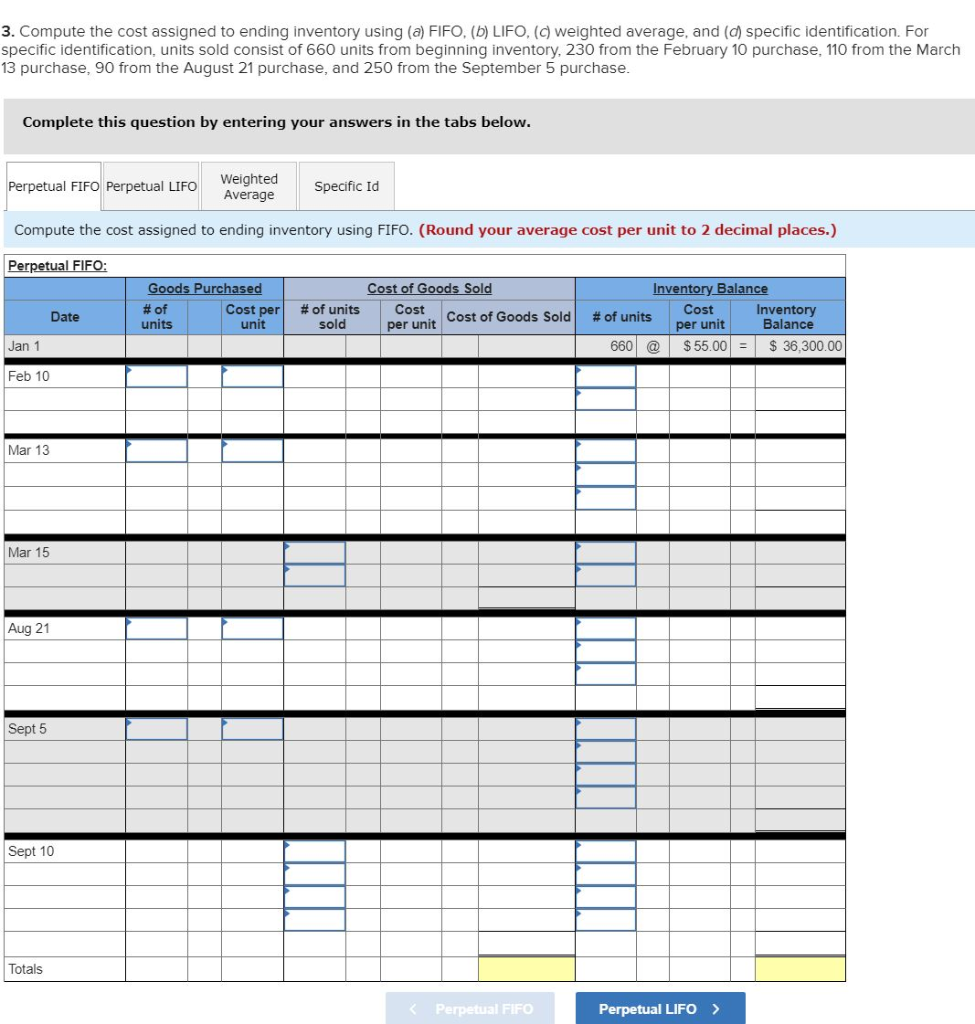
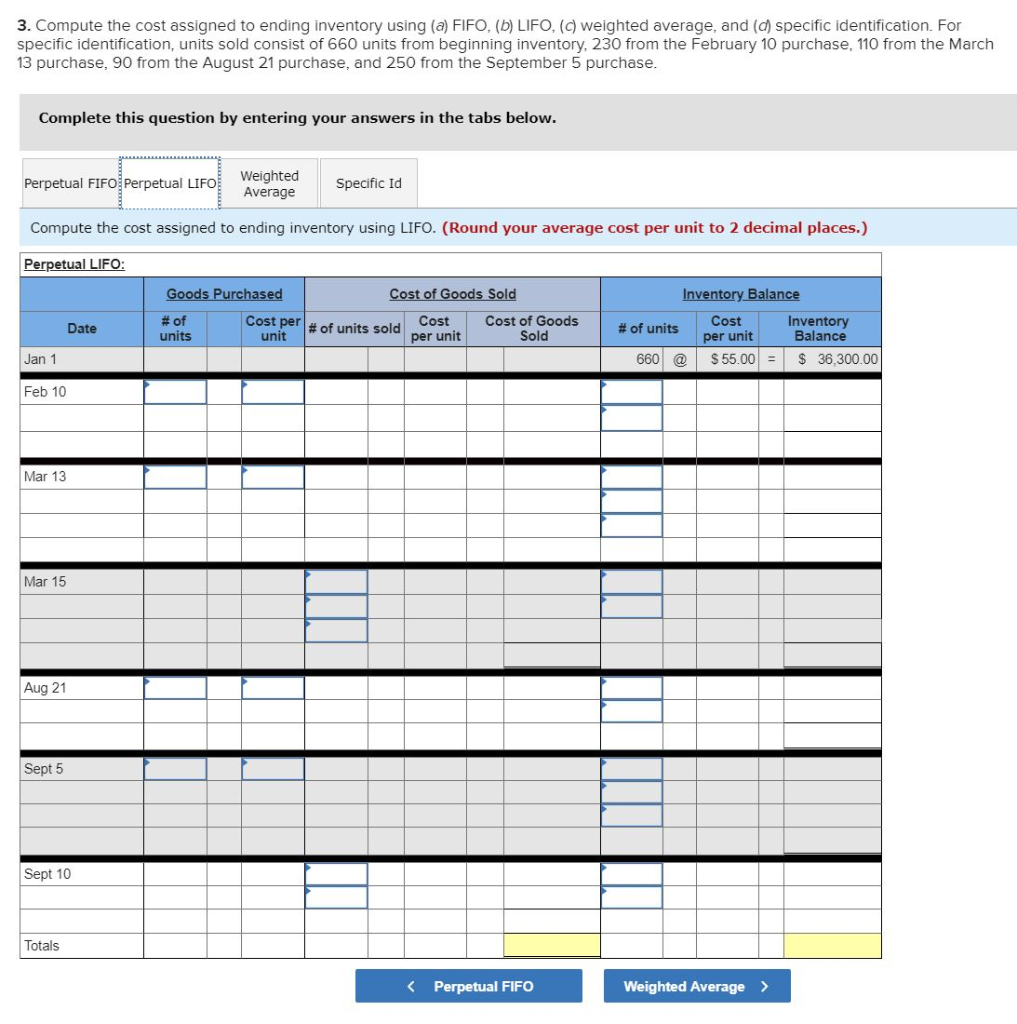
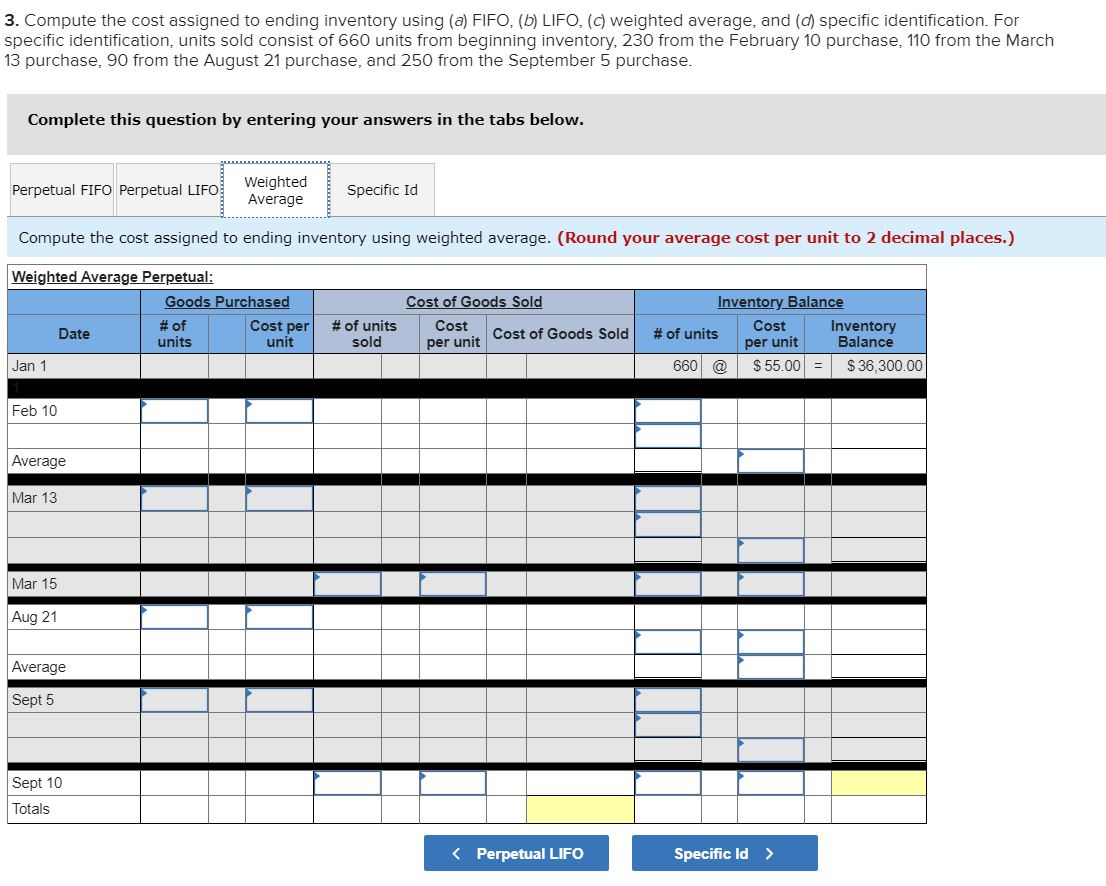
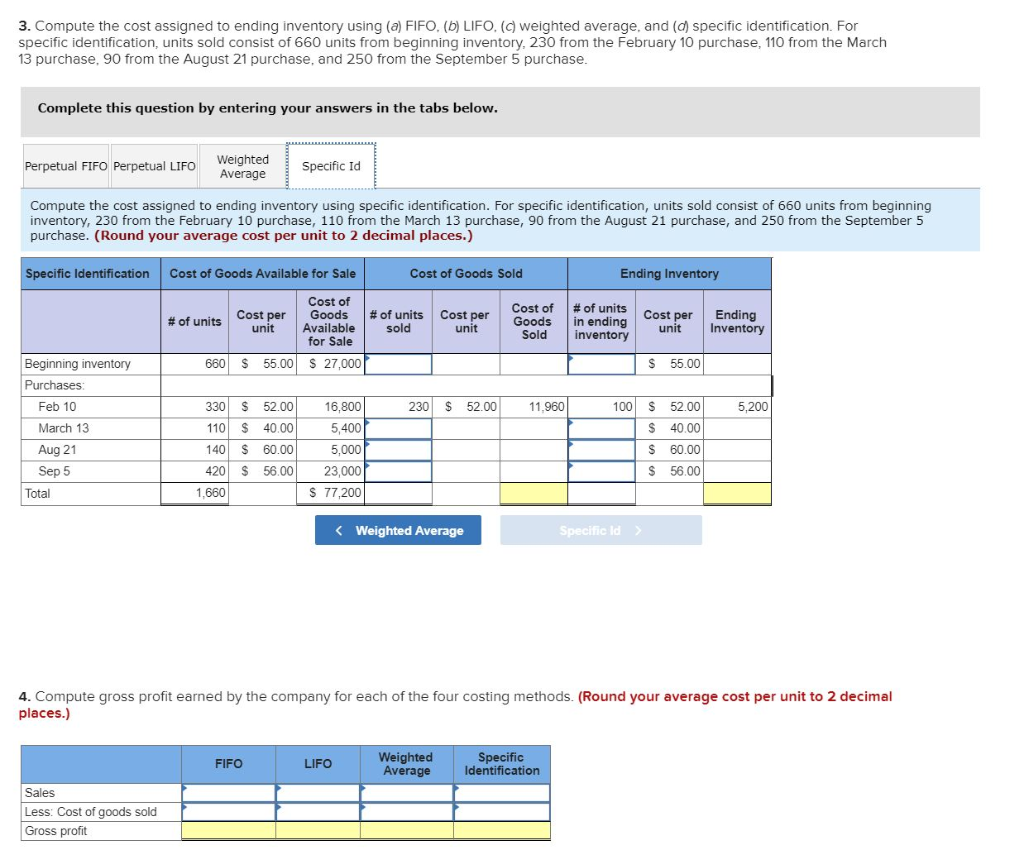

Montoure Company uses a perpetual inventory system. It entered into the following calendar-year purchases and sales transactions Units Sold at Retail Units Acquired at Cost 660 units @ $55 per unit 330 units @ $52 per unit 110 units @ $40 per unit Date Activities Jan. 1 Beginning inventory Feb. 10 Purchase Mar. 13 Purchase Mar. 15 Sales Aug. 21 Purchase Sept. 5 Purchase Sept. 10 Sales Totals 780 units @ $75 per unit 140 units @ $60 per unit 420 units @ $56 per unit 560 units @ $75 per unit 1,340 units 1,660 units Required: 1. Compute cost of goods available for sale and the number of units available for sale. Cost of goods available for sale Number of units available for sale units 2. Compute the number of units in ending inventory. Ending inventory units 3. Compute the cost assigned to ending inventory using (a) FIFO, (b) LIFO, () weighted average, and (d) specific identification. For specific identification, units sold consist of 660 units from beginning inventory, 230 from the February 10 purchase, 110 from the March 13 purchase, 90 from the August 21 purchase, and 250 from the September 5 purchase. Complete this question by entering your answers in the tabs below. Perpetual FIFO Perpetual LIFO Weighted Average Specific Id Compute the cost assigned to ending inventory using FIFO. (Round your average cost per unit to 2 decimal places.) Perpetual FIFO: Goods Purchased # of Cost per units unit Cost of Goods Sold Cost Cost of Goods Sold per unit # of units sold Date Inventory Balance Cost Inventory # of units per unit Balance $55.00 = $ 36,300.00 Jan 1 660 @ Feb 10 Mar 13 Mar 15 Aug 21 Sept 5 Sept 10 Totals Perpetual FIFO Perpetual LIFO > 3. Compute the cost assigned to ending inventory using (a) FIFO, (b) LIFO, (C) weighted average, and (d) specific identification. For specific identification, units sold consist of 660 units from beginning inventory, 230 from the February 10 purchase, 110 from the March 13 purchase, 90 from the August 21 purchase, and 250 from the September 5 purchase. Complete this question by entering your answers in the tabs below. Perpetual FIFO Perpetual LIFO Weighted Average Specific Id Compute the cost assigned to ending inventory using LIFO. (Round your average cost per unit to 2 decimal places.) Perpetual LIFO: Goods Purchased Cost of Goods Sold # of Cost per # of units sold Cost Date Cost of Goods Sold Inventory Balance # of units Cost Inventory per unit Balance $ 55.00 = $ 36,300.00 units unit per unit Jan 1 660 @ Feb 10 Mar 13 Mar 15 Aug 21 Sept 5 10 Totals 3. Compute the cost assigned to ending inventory using (a) FIFO, (b) LIFO, () weighted average, and (c) specific identification. For specific identification, units sold consist of 660 units from beginning inventory, 230 from the February 10 purchase, 110 from the March 13 purchase, 90 from the August 21 purchase, and 250 from the September 5 purchase. Complete this question by entering your answers in the tabs below. Perpetual FIFO Perpetual LIFO Weighted Average Specific Id Compute the cost assigned to ending inventory using weighted average. (Round your average cost per unit to 2 decimal places.) Weighted Average Perpetual: Goods Purchased # of Cost per Date units unit # of units sold Cost of Goods Sold Cost Cost of Goods Sold per unit Inventory Balance Cost # of units Inventory per unit Balance 660 @ $ 55.00 = $36,300.00 Jan 1 Feb 10 Average Mar 13 Mar 15 Aug 21 Average Sept 5 Sept 10 Totals 3. Compute the cost assigned to ending inventory using (a) FIFO. (b) LIFO. (C) weighted average, and (d) specific identification. For specific identification, units sold consist of 660 units from beginning inventory, 230 from the February 10 purchase, 110 from the March 13 purchase, 90 from the August 21 purchase, and 250 from the September 5 purchase. Complete this question by entering your answers in the tabs below. Perpetual FIFO Perpetual LIFO Weighted Average Specific id Compute the cost assigned to ending inventory using specific identification. For specific identification, units sold consist of 660 units from beginning inventory, 230 from the February 10 purchase, 110 from the March 13 purchase, 90 from the August 21 purchase, and 250 from the September 5 purchase. (Round your average cost per unit to 2 decimal places.) Specific Identification Cost of Goods Available for Sale Cost of Goods Sold Ending Inventory Cost of # of units Cost per Goods unit Available for Sale 660 $ 55.00 $ 27,000 # of units Cost per sold unit Cost of Goods Sold # of units in ending inventory Cost per unit Ending Inventory $ 55.00 230 $ 52.00 11,960 100 5,200 Beginning inventory Purchases Feb 10 March 13 Aug 21 Sep 5 Total 330 $ 52.00 110 $ 40.00 140 S 60.00 420 $ 56.00 1,660 16,800 5,400 5,000 23,000 $ 77,200 $ 52.00 $ 40.00 $ 60.00 $ 56.00












